今日推薦開源項目:《每年一讀 Annual-Reading-List》
今日推薦英文原文:《How To Write a Readable README》

今日推薦開源項目:《每年一讀 Annual-Reading-List》傳送門:GitHub鏈接
推薦理由:這個項目是作者計劃每年都要讀一遍的書籍列表,今年快結束了他也準備讀完了。讀書,可以說是用自己去理解他人思想的一種方式,對於那些傳授知識的書來說,我們用自己的知識去理解,就能夠獲得書中的技能;相對應的,對於那些傳授一種思想的書來說,我們自然是用思想去理解,這樣的書隨著時間的不斷經過,用於理解的思想變得不同,自然會有不同的收穫,這就是為什麼有些書可以反覆閱讀的原因。
今日推薦英文原文:《How To Write a Readable README》作者:Jackson Z.
原文鏈接:https://medium.com/better-programming/how-to-write-a-readable-readme-590ae6124f69
推薦理由:欲看項目先讀 README
How To Write a Readable README
Stop confusing developers with READMEs
A README is a project』s first impression for developers.A well-written README can bring traction and support to the project, but the quality of a README, compared to code, is less emphasized. As a result, developers usually put the least effort into their README.
A README should achieve four goals with as few words as possible:
- State the objective: State the problem that the project is trying to solve.
- Define the audience: Define who can/should the project.
- Demo usage: Demonstrate how to start using the project.
- Clarify workflow (optional): Clarify how to collaborate and contribute.
Step 1. State the Objective
I suggest using one sentence of the following form:- my awesome project is a utility/tool/framework/etc. to help my target audience do some task.
- PyTorch: An open-source machine learning framework that accelerates the path from research prototyping to production deployment. (If converted to our form, it will be: 「PyTorch is a machine learning framework to help (everyone) accelerate the path from research prototyping to production deployment.」)
- React: React is a JavaScript library for building user interfaces. (React』s objective statement is almost the same as our format except their audience is everyone).
Step 2. Define the Audience
- Define the group of users who can use it: operating system, programming language, and framework limitations.
- Define the group of users that can/can』t benefit from the project.

credit: example target audience from Moby
Step 3. Demo Usage
- Give users intuition about how the project works.
- Help users get started using the project.
The users can understand the project from the example code and they can copy-paste the code to get started using the project.
Here is an example from TensorFlow:
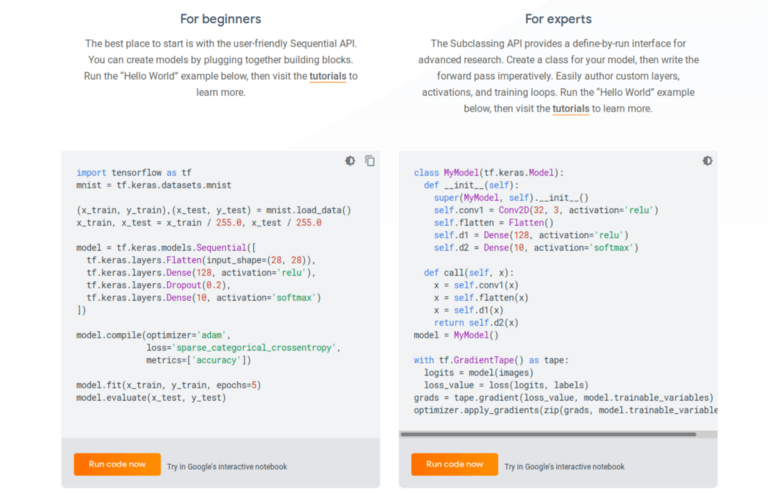
credit: tensorflow.com
Step 4. Clarify the Workflow (Optional, Only if the Project Accepts Contributors)
The directory/project structure: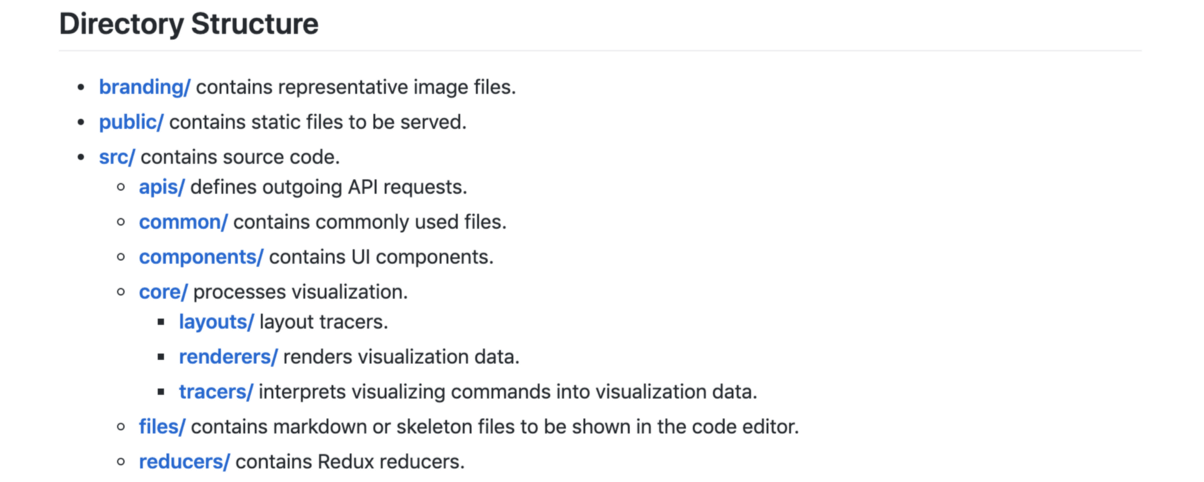
credit: example directory structure from algorithm-visualizer
Developer setup:
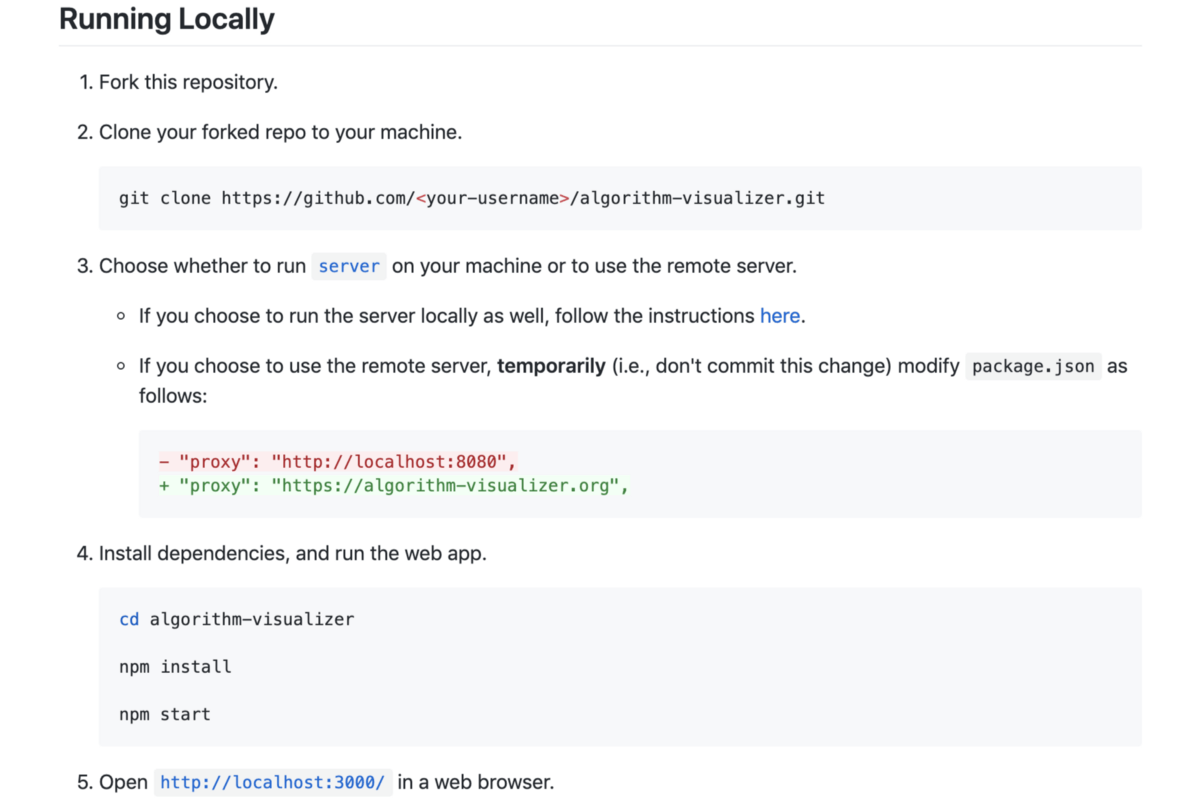
credit: example developer setup from algorithm-visualizer
Best practices: Define the standard for the quality of work.
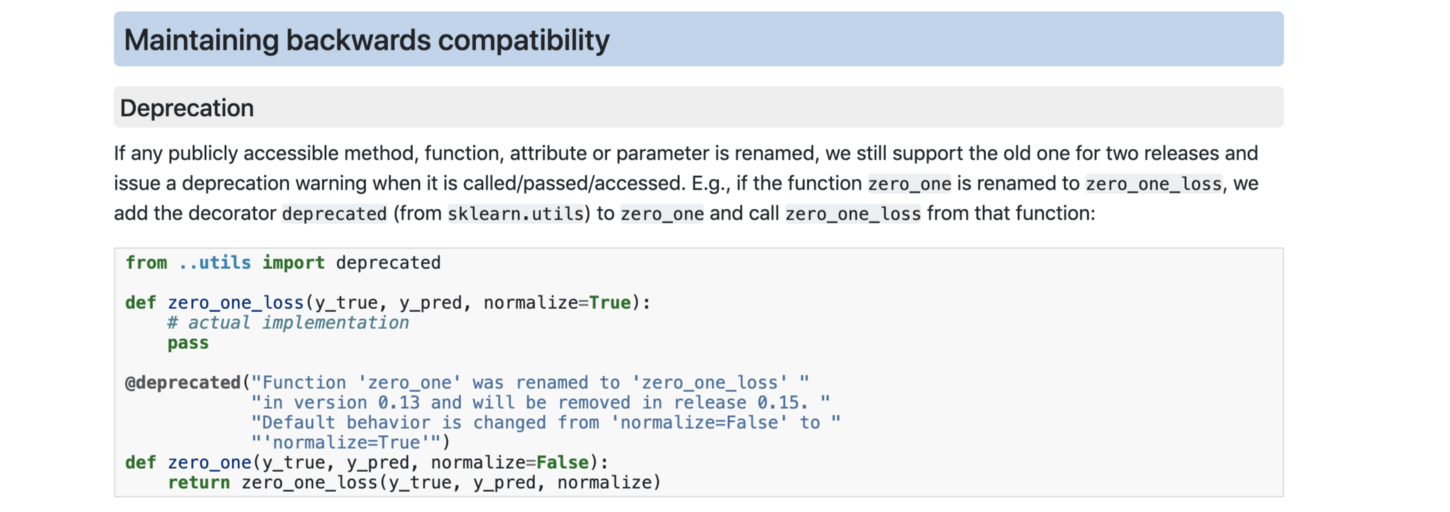
credit: example best practices from scikit-learn
Submission process: Define the process of submitting code/review/documentation.

credit: example submission process from scikit-learn
Bonus: A Tool I Built to Improve README Readability Automagically
The README is code, so it deserves linter and continuous integration too.The readable-readme project(https://github.com/tianhaoz95/readable-readme) is a continuous integration tool based on GitHub Actions to control the readability/quality of READMEs.
When added to the workflow, readable-readme will generate a quality report for all the README files upon push/pull requests.

credit: example usage from readable-readme
This is what the generated report looks like:
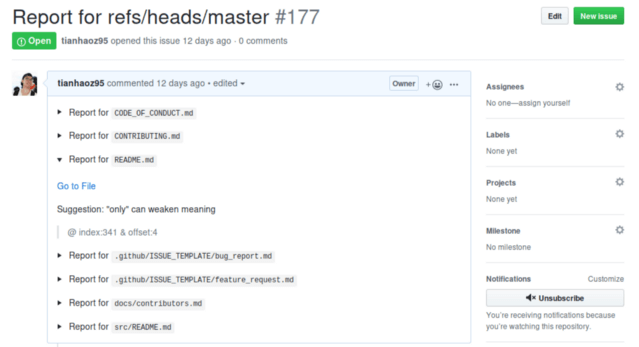
credit: readme quality report from readable-readme
Note: The readable-readme project is at a super early stage. All kinds of contributions are welcome. Let』s make READMEs great again!
Opinions are my own and not the views of my employer.
下載開源日報APP:https://openingsource.org/2579/
加入我們:https://openingsource.org/about/join/
關注我們:https://openingsource.org/about/love/

欲看項目先讀 README ,閱讀性好的 readme 確實非常重要